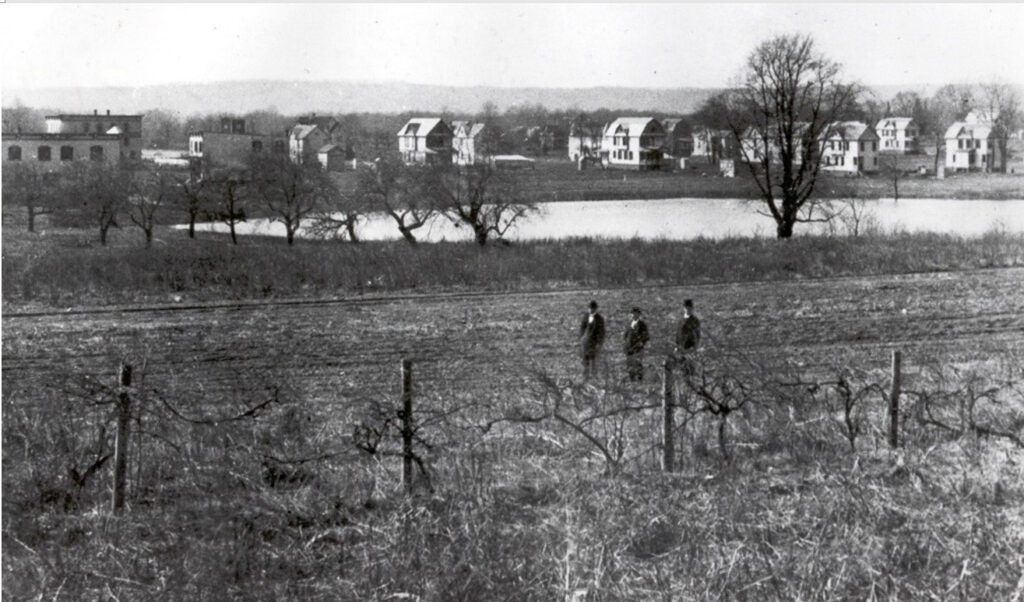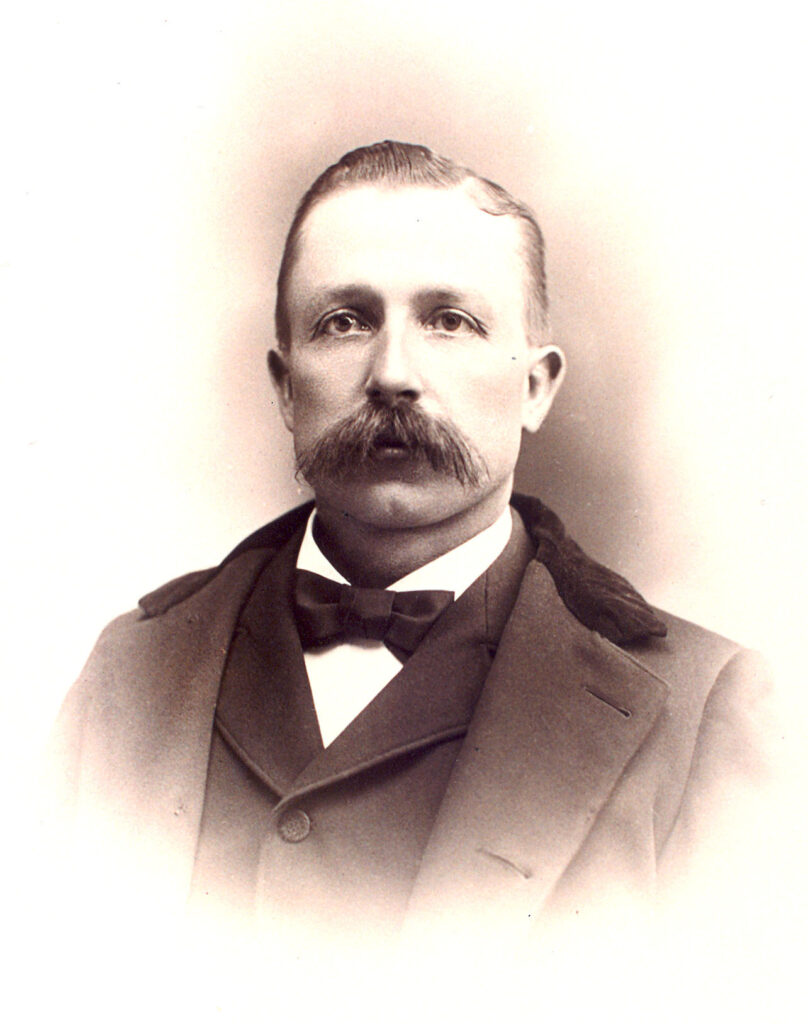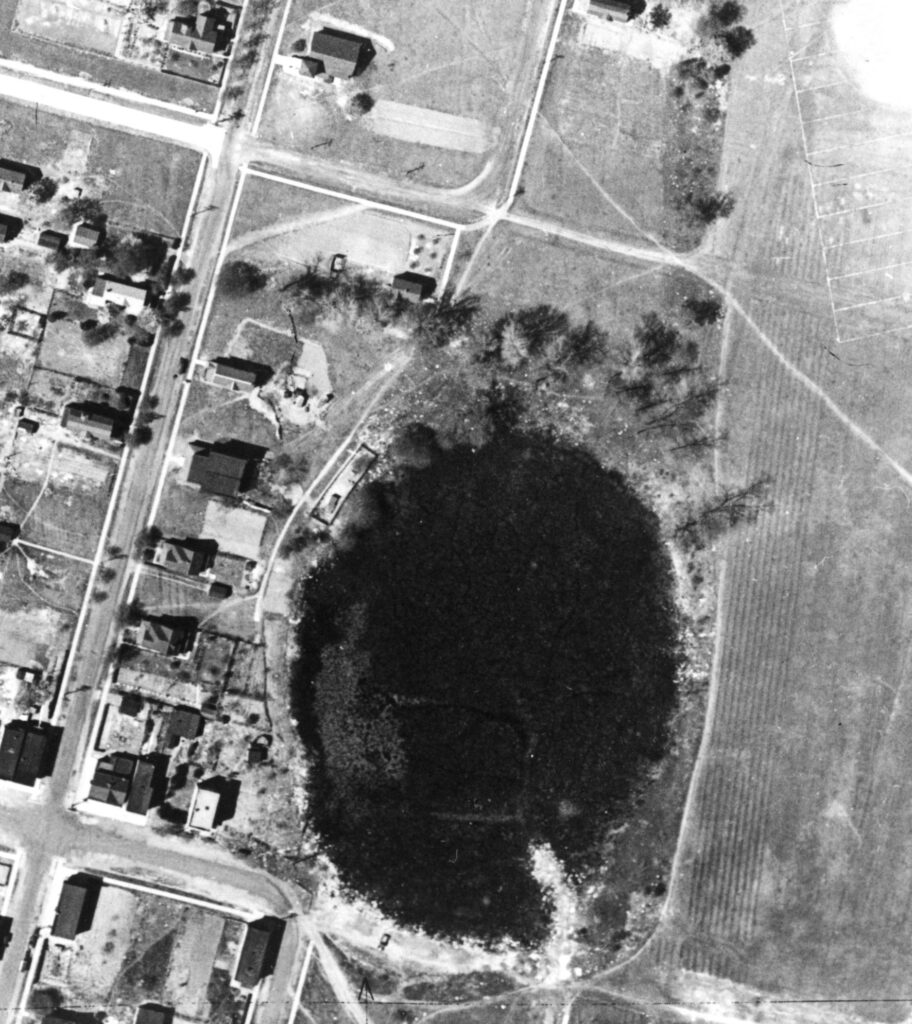
and N. 23rd St.; homes on N. 20th St.
SOURCE: Ken. Hist. Soc.
The ponds that disappeared, Part 2
Of four ponds once in Kenilworth only Shallcross Pond off the end N. 14th St. in Black Brood Park remains. The three that vanished are Station Pond, Hiller’s Pond, and Jackson Pond. Last month Part 1 of this 3-part series featured Station Pond. Part 2 features Hiller’s Pond.
Hiller’s Pond generally was bordered on the south by Washington Ave. and ran north to nearly Monroe Ave. It basically was situated between N. 21st St. to N. 22nd streets. It was catty-corner to today’s Opacity Funeral Home parking lot. The pond had its share of beautiful water lilies and was a popular winter ice skating location.

The pond acquired its name from an early settler and builder, John Hiller, Jr. He and his family came from Honesdale, PA to Kenilworth when Kenilworth was part of New Orange. He was an early postmaster, councilman, school board president, and mayor. In 1969 his son, Fred Hiller, explained that the family arrived at New Orange in 1897 and first lived in an old, abandoned farmhouse. His father soon erected a store with living quarters above for his family on the southwest corner of Washington Ave. and N. 21st. With Hiller’s Store in immediate proximity to the pond, locals dubbed the basin Hiller’s Pond. Granddaughter Lee Hiller Kapner expressed in 2023 that the store was sold in the 1920s or 1930s and that the building was demolished in 1968. The site is now a funeral home parking lot.
The pond was significantly large enough to present an impediment to travel in the early days of Kenilworth. Upsala College was at the top of N. 21st St. well north of the pond. Upsala faculty and students heading up N. 21st St. from the Boulevard could go no farther than Washington Ave. They had to circumvent the pond by going over to N. 20 St., then up to Monroe Ave. and once there travel east to pick up N. 21st St. Travelers heading north to Kenilworth’s Downtown or on to Springfield in their wagons or on horseback similarly got no farther than Washington Ave. They had to head west to pick up Cross St. to reach destinations.

N. 20th St. on left.
SOURCE: Un. Co. Parks Dept.
Charles Vitale noted (1957) that among the causes for the disappearance of Hiller’s Pond was that the clay layer beneath the pond was broken in the 1920s due to dynamiting need to allow construction of sanitary sewers. The demise of Hiller’s Pond was slow as its water seeped away transforming the pond to a swampy area. Old editions of the Cranford Chronicle report residents using the swamp to dump trash and garbage. According to Eugene Coppola (1920-2020) when the Kramer-Ring Building was erected in 1927 on the Boulevard at N. 21st St, dirt excavated to create the cellar was hauled by horse-drawn wagons and deposited into the ever-ebbing Hiller’s Pond a block away. The Kramer-Ring building now houses Ava’s Restaurant.
As late as the early 1950s what remained of the pond area was a small muddy area, although N. 21st St. between Washington and Monroe avenues had been cut thru and some homes were built on part of the site of the old pond. In the 1950s a small portion of St. Theresa’s School was built just east of N. 22nd St on old pond land. In the 1960s two-family homes began to be erected on the north side of Washington Ave. between N. 21st and N. 22nd streets where the pond once stood.
Two ponds gone; one more to go. Watch for Part 3 about Jackson Pond next month.
Research provided by Walter E. Boright, Ed. D., historian, and Historic Signs, Inc.
Persons with inquiries about this or other Kenilworth history topics may contact Dr. Boright at drbori@aol.com or 908-256-5200.
